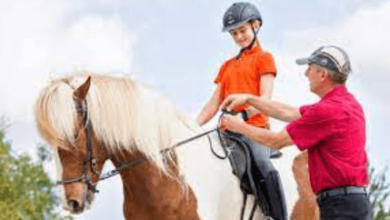Dressed for Success: Understanding Dress Code and Tack Regulations in Eventing Competitions

Introduction
Eventing, a multifaceted equestrian sport, not only tests the versatility and skill of horse and rider but also requires adherence to specific dress code and tack regulations. These rules ensure safety, fairness, and a level playing field, while also preserving the tradition and elegance of the sport. This article explores the dress code and tack regulations across the different phases of eventing.
Dress Code in Eventing
- General Guidelines: Dress code in eventing reflects the discipline, respect for the sport, and safety considerations. It varies across the three phases: dressage, cross-country, and show jumping.
- Dressage Phase: Traditional attire includes a white or light-colored breeches, a competition jacket (usually dark), a white stock tie or choker, a white or light-colored shirt, and a riding helmet. Tall boots and gloves are also part of the standard dressage attire.
- Cross-Country Phase: Safety is paramount in cross-country. Riders often wear colors representing their team or personal choice. A certified helmet, body protector, and medical armband or bracelet are mandatory. Close-fitting clothing, such as a shirt and breeches, is required, and many riders choose to wear a cross-country vest for visibility.
- Show Jumping Phase: Attire for show jumping is similar to dressage, with a more formal appearance. Riders usually wear a competition jacket, white breeches, a white shirt with a stock tie or choker, a riding helmet, tall boots, and gloves.
Tack Regulations in Eventing
- General Tack Rules: Tack must be in good condition, fit the horse properly, and comply with safety standards. The use of illegal equipment can result in penalties or disqualification.
- Dressage Phase: Tack for dressage includes a snaffle or double bridle, a dressage saddle, and a saddle pad. Martingales, boots, and bandages are not allowed.
- Cross-Country Phase: A jumping saddle is used, and protective boots or bandages for the horse’s legs are permitted. Running or standing martingales are allowed, but they must be correctly fitted.
- Show Jumping Phase: Similar to cross-country, a jumping saddle and protective leg wear for the horse are used. Running martingales are allowed, but standing martingales are not.
Safety Equipment and Considerations
- Helmets: A certified, properly fitting helmet is mandatory in all phases of eventing. It must have a harness and meet current safety standards.
- Body Protectors: Body protectors are required in the cross-country phase and are designed to offer protection in the event of a fall.
The Importance of Adhering to Dress Code and Tack Regulations
- Fairness and Safety: Adhering to dress code and tack regulations ensures a level playing field for all competitors and prioritizes the safety of both horse and rider.
- Respect for Tradition: Following these regulations also shows respect for the tradition and etiquette of the sport, preserving its elegance and dignity.
FAQs
- Q1: Can riders personalize their attire in eventing?
- A1: Yes, riders can add personal touches, especially in the cross-country phase, as long as they comply with safety and regulation standards.
- Q2: Why are certain types of tack prohibited in different phases?
- A2: Tack regulations are designed to ensure the horse’s comfort and safety and to maintain a level playing field. Prohibiting certain types of tack helps prevent unfair advantages and potential harm to the horse.
- Q3: How do dress code and tack regulations vary in international competitions?
- A3: International competitions often have stricter and more detailed regulations, aligning with standards set by governing bodies like the FEI (Fédération Equestre Internationale). Competitors should always check the specific rules for each competition.
Conclusion
Understanding and adhering to the dress code and tack regulations in eventing is crucial for the safety, fairness, and respect of the sport. These guidelines, varying across the dressage, cross-country, and show jumping phases, reflect the unique demands and traditions of each. By following these regulations, riders demonstrate their commitment to the sport’s integrity and the well-being of their equine partners.




